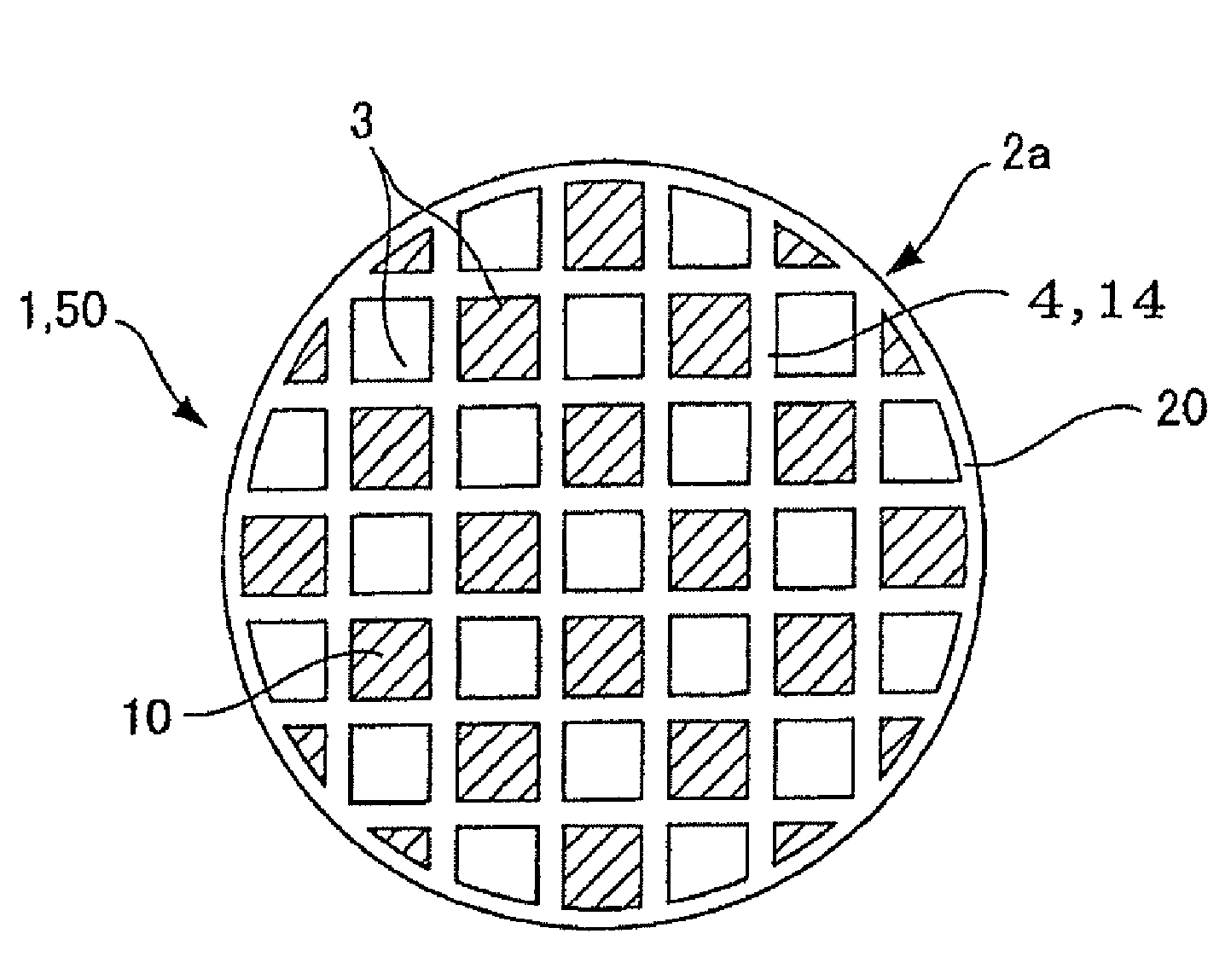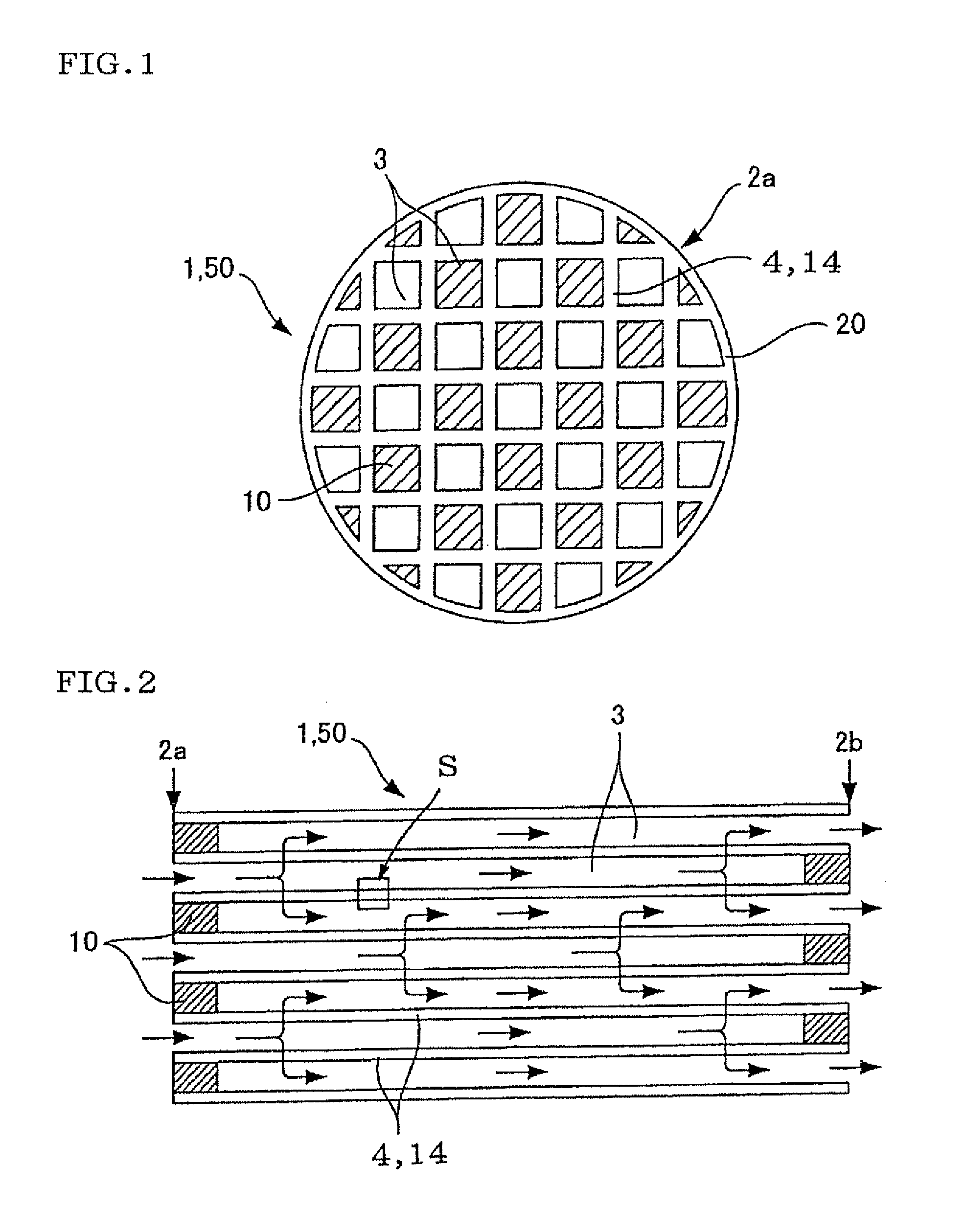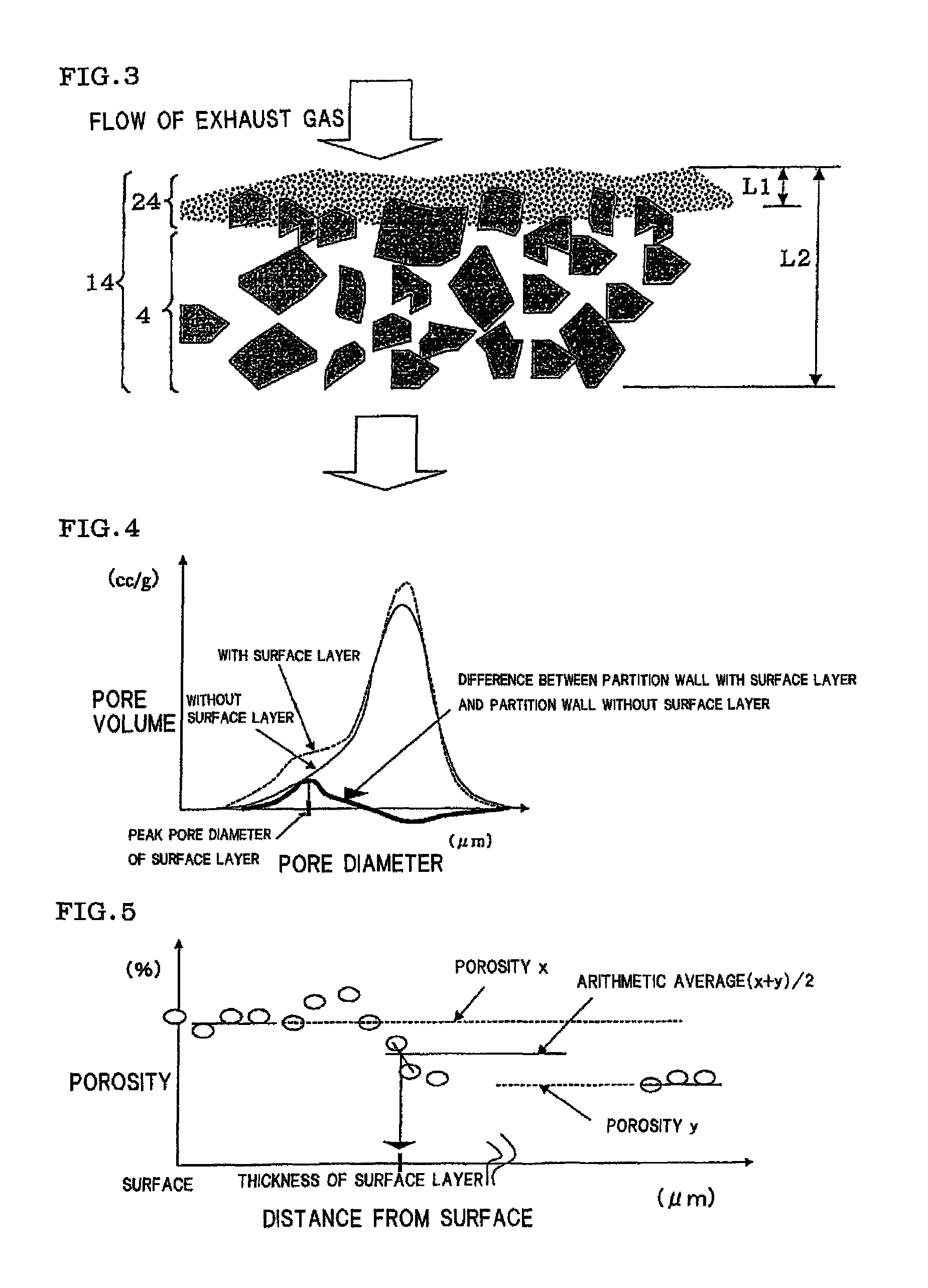Honeycomb filter
a filter and honeycomb technology, applied in the field of honeycomb filters, can solve the problems of increasing the flow rate of exhaust gas passing through the partition walls, reducing the porousness of the partition walls, and increasing the pressure loss, etc., and achieves the effect of small pressure loss, excellent purification efficiency, and not easy to increase the pressure loss
- Summary
- Abstract
- Description
- Claims
- Application Information
AI Technical Summary
Benefits of technology
Problems solved by technology
Method used
Image
Examples
example 1
[0115][Preparation of Formed Honeycomb Article] As cordierite-forming materials, alumina, aluminum hydroxide, kaoline, talc and silica were used, and 13 parts by mass of a pore former, 35 parts by mass of a dispersion medium, 6 parts by mass of an organic binder and 0.5 part by mass of a dispersant were added to 100 parts by mass of cordierite-forming material, mixed and kneaded to prepare kneaded clay. Water was used as the dispersion medium, coke having an average particle diameter of 10 μm was used as the pore former, hydroxypropyl methyl cellulose was used as the organic binder, and ethylene glycol was used as the dispersant. Subsequently, the kneaded clay was extruded using a predetermined die to obtain a formed honeycomb article having a quadrangular cell shape and the whole columnar (cylindrical) shape.
[0116][Preparation of Plugged Honeycomb Structure] The formed honeycomb article was dried by microwave drying, and further completely dried by a hot air drier, and then both en...
examples 2 to 5
[0132]Honeycomb filters were prepared in the same manner as in Example 1 except that, to form a surface layer, a fibrous material was appropriately changed, and the atomization of slurry for the surface layer was appropriately adjusted to change a surface layer thickness L1, a surface layer peak pore diameter, a surface layer porosity, a surface layer fiber content, and surface layer thicknesses and masses in positions on an inlet side, in the center and on an outlet side, and the honeycomb filters were measured and evaluated with respect to items similar to those of Example 1. The results are shown in Table 1.
examples 6 , 7
Examples 6, 7
[0133]To prepare a plugged honeycomb structure (a formed honeycomb article), a die for extrusion was appropriately changed to change a cell density and a partition wall thickness L2. Moreover, to form a surface layer, a fibrous material was appropriately changed to change the peak pore diameter of the surface layer. Except for these respects, honeycomb filters were prepared in the same manner as in Example 1, and the honeycomb filters were measured and evaluated with respect to items similar to those of Example 1. The results are shown in Table 1.
PUM
| Property | Measurement | Unit |
|---|---|---|
| porosity | aaaaa | aaaaa |
| porosity | aaaaa | aaaaa |
| pore diameter | aaaaa | aaaaa |
Abstract
Description
Claims
Application Information
 Login to View More
Login to View More - R&D
- Intellectual Property
- Life Sciences
- Materials
- Tech Scout
- Unparalleled Data Quality
- Higher Quality Content
- 60% Fewer Hallucinations
Browse by: Latest US Patents, China's latest patents, Technical Efficacy Thesaurus, Application Domain, Technology Topic, Popular Technical Reports.
© 2025 PatSnap. All rights reserved.Legal|Privacy policy|Modern Slavery Act Transparency Statement|Sitemap|About US| Contact US: help@patsnap.com



